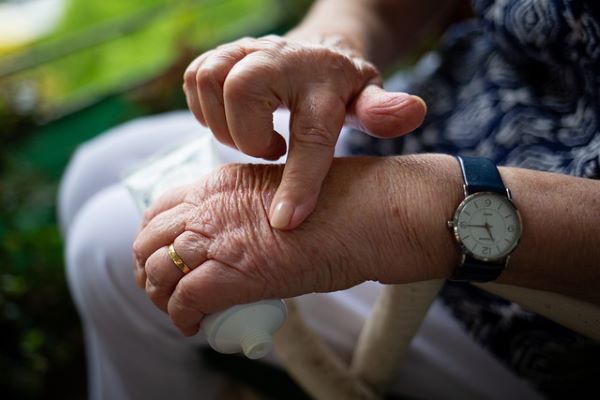Rheumatoid arthritis (RA) is a chronic inflammatory disorder that primarily affects the joints but can also have systemic effects on various organs. In India, RA affects approximately 0.75% of the adult population, according to a study published in the Journal of Family Medicine and Primary Care in 2020. This autoimmune disorder is more prevalent in women, particularly those between the ages of 30 and 50. Despite its significant impact on quality of life, RA remains shrouded in myths and misconceptions that often lead to delayed diagnosis and inadequate treatment. This article aims to debunk 10 common myths about rheumatoid arthritis to provide accurate information and help those affected manage the condition more effectively.
10 Common Myths About Rheumatoid Arthritis (RA)
Myth 1: RA Only Affects the Elderly
Fact: While RA is more common in older adults, it can occur at any age, including in young adults and even children. Juvenile idiopathic arthritis is a form of RA that affects children. According to Arthritis Foundation India, nearly 25% of RA cases are diagnosed in individuals under the age of 40. (Source)
Myth 2: RA is the Same as Osteoarthritis
Fact: RA and osteoarthritis (OA) are both forms of arthritis, but they have different causes and symptoms. RA is an autoimmune disease that causes systemic inflammation, while OA is a degenerative joint disease caused by wear and tear on the joints. The Indian Rheumatology Association emphasizes that RA requires a different treatment approach than OA. (Source)
Myth 3: RA Can Be Cured
Fact: There is currently no cure for RA, but early diagnosis and treatment can help manage symptoms and prevent joint damage. Disease-modifying antirheumatic drugs (DMARDs) and biologics can slow disease progression. Rheumatology International notes that ongoing treatment and lifestyle management are essential for controlling RA. (Source)
Myth 4: Exercise Worsens RA Symptoms
Fact: Exercise is actually beneficial for people with RA. It helps maintain joint flexibility, reduces inflammation, and improves overall physical health. The Mayo Clinic recommends low-impact exercises like swimming, walking, and yoga to help manage RA symptoms without stressing the joints. (Source)
Myth 5: RA Only Affects the Joints
Fact: While joint pain and swelling are the most common symptoms of RA, it can also affect other parts of the body, including the heart, lungs, eyes, and skin. The World Health Organization (WHO) highlights that RA is a systemic disease with potential complications beyond the joints, including cardiovascular disease and lung involvement. (Source)
Myth 6: RA is Caused by a Poor Diet
Fact: RA is an autoimmune disease, not a result of poor diet or lifestyle choices. While certain foods can exacerbate inflammation, diet alone does not cause RA. The National Institute of Nutrition (India) advises that a balanced diet rich in anti-inflammatory foods can help manage symptoms but cannot prevent or cure RA. (Source)
Myth 7: RA is Not a Serious Disease
Fact: RA is a serious, potentially disabling condition that requires ongoing treatment. Without proper management, RA can lead to severe joint damage, disability, and increased risk of other health conditions. The Indian Journal of Rheumatology stresses the importance of early diagnosis and treatment to prevent long-term complications. (Source)
Myth 8: RA is Just an Old Person’s Disease
Fact: RA can affect people of all ages, including young adults and children. The misconception that RA is only an old person’s disease can lead to delayed diagnosis and treatment in younger individuals. According to the Juvenile Arthritis Society of India, early intervention is crucial for managing the disease effectively in younger patients. (Source)
Also, read: Now Debunking 10 Common Polycystic Ovary Syndrome Myths
Myth 9: RA Treatment is the Same for Everyone
Fact: RA treatment is highly individualized. What works for one person may not work for another. Treatment plans are tailored based on the severity of the disease, patient’s age, lifestyle, and other health conditions. The Indian Rheumatology Association recommends a personalized approach to treatment, which may include a combination of medication, physical therapy, and lifestyle changes. (Source)
Myth 10: RA Medications Have Severe Side Effects and Should Be Avoided
Fact: While RA medications can have side effects, the benefits often outweigh the risks. Untreated RA can lead to severe joint damage and disability. The American College of Rheumatology advises that patients work closely with their doctors to find the most effective treatment with manageable side effects. Regular monitoring can help mitigate potential risks. (Source)
Frequently Asked Questions (FAQs)
Q1: How is Rheumatoid Arthritis diagnosed?
A1: RA is diagnosed through a combination of medical history, physical examination, blood tests to check for rheumatoid factor (RF) and anti-CCP antibodies, and imaging tests like X-rays and ultrasounds to assess joint damage.
Q2: Can lifestyle changes help manage RA?
A2: Yes, lifestyle changes such as regular exercise, a healthy diet, stress management, and quitting smoking can help manage RA symptoms and improve overall quality of life.
Q3: What is the role of DMARDs in RA treatment?
A3: DMARDs (Disease-Modifying Antirheumatic Drugs) are medications that slow the progression of RA and prevent joint damage. They are a cornerstone of RA treatment and are often used in combination with other therapies.
Q4: Can RA go into remission?
A4: Yes, with early and aggressive treatment, many patients can achieve remission, where the disease is well-controlled, and symptoms are minimal. However, ongoing treatment is usually required to maintain remission.
Q5: Is RA more common in women?
A5: Yes, RA is about two to three times more common in women than in men, according to The Indian Journal of Rheumatology. Hormonal factors are believed to play a role in this gender disparity.





